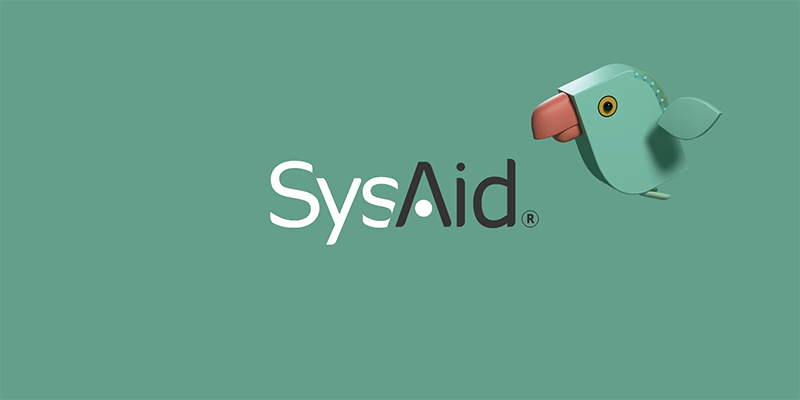2018: More of the Same, with a Few Step Changes

I think that we’re going to see many of this year’s trends continuing into 2018, and that they’re going to lead to a surprising conclusion. IT will stop being viewed as a necessary evil, a cost center that needs to be run more efficiently. Instead, it will take its rightful place as a valuable, and highly valued, contributor to the business.
Here are my six predictions for IT, and for IT service management (ITSM), in 2018.
1. Most Computers Will Be Invisible
If you ask people to count the number of computers they own, a typical answer might be 2 or 3. They’ll be thinking about their desktop PC, and maybe a couple of laptops, for example. Some people will go further and include their phones and tablets in the count. But there are already many more computers in a typical home and most people probably don’t even notice them. They are embedded in a host of everyday consumer objects: cars, washing machines, light bulbs, toasters, WiFi routers, TVs, smoke alarms, thermostats, and the many other devices that already form part of the “internet of things” (IoT). These devices typically run Linux, or some other dedicated operating system, and they already outnumber the things that we think of as computers.
IoT devices are starting to appear in our work places too, and that trend is set to accelerate. This is something that should make all of us pause for thought, because it’s going to have an impact on how we manage security.
If you belong to an organization that thinks of itself as security conscious, you have no doubt already devoted resources to managing network security, patches, version control, and everything else needed to ensure your computers are safe and secure. You are much less likely to have given a lot of thought to your IoT devices. Ensuring that these are safe is certainly going to make security management quite a lot harder; but if you ignore them then you might suddenly find your data center under attack from the lightbulbs and toasters in the canteen!
Why not make 2018 the year you bring IoT under control in your environment?
2. There Will Be More Major Security Breaches
The number of security breaches reported in the press has been escalating for many years, and the scale of such breaches has been growing too. There is no end in sight. Many of these breaches have resulted in huge costs for the companies involved, and the resignation of the board members responsible.
You need to do everything you can to protect your information from attackers, but whatever controls you put in place you can never guarantee that you won’t be breached. So make sure you have well-rehearsed plans for how you’re going to respond. AND make sure you monitor your networks and systems to help you identify when you have been breached. Some of the most expensive breaches are the ones that have gone undetected for weeks, and sometimes months, turning an embarrassment into a catastrophe.
3. Greater Adoption of DevOps, with More Focus on Culture
Whilst the most innovative, cutting edge IT companies have been enthusiastic about DevOps for quite some time now, for more mainstream organizations it wasn’t really on the ITSM map. Recently, that’s flipped. DevOps has gone mainstream, with more and more organizations adopting some of its ideas and methodologies to help them deliver value faster, and at lower risk. Some of these IT organizations focus on the technical aspects of DevOps, and there is certainly a lot of value to be gained from automating the tool chain that integrates and deploys code, resulting in smaller, safer, and faster changes to IT.
But organizations that never go beyond this focus on technology will miss out on many of the real benefit to be gained from the DevOps approach. This benefit comes through managing Flow, Feedback, and Experimentation and Learning – the three ways of DevOps; and organizations won’t gain this benefit without doing the work that’s needed to understand the three ways.
Unfortunately, as so often happens when an innovation goes mainstream, some organizations will claim to be “doing DevOps” when all they have done is adopted some of its typical technical features. When this fails to deliver according to expectations, then they’ll decide that “DevOps has failed” or “DevOps doesn’t work.” They’ll then move on to the next popular fad, and will never reap the benefits that come to organizations that see DevOps as a combination of culture, agile, lean, measurement, and sharing (CALMS), and so introduce and implement technical change appropriately.
4. Increased Use of AI and Automation in ITSM
The biggest step change in 2018 is likely to be a huge increase in the use of artificial intelligence (AI) and automation in all areas of IT service management. Automation offers many opportunities to deliver more value, with better customer experience and lower costs. Some examples of this include:
- Chatbots to reduce the need for agents to deal with routine enquiries, and to ensure that when incidents and requests do need a person to intervene, they get directed to the right agent
- Automated matching of incidents to known problems and of requests to workflows, to improve access to existing knowledge allowing people to make better use of it
- Automated translation of chat, and voice communication, to enable service desks to support many additional languages
- Increased automation of service requests, to provide faster and more reliable service with little or no human intervention
- Automated analysis of all incident and problem records to help identify areas in need of investigation, and to provide the data needed for understanding and resolving underlying problems
This is only a very partial list. You can probably think of many more opportunities to use automation and AI to help deliver value to your customers and users.
5. More Focus on Value and Customer Experience
Traditionally, IT service management has focused on efficiency (reducing effort and cost) and on delivering services to meet the targets laid out in service level agreements (SLAs). Many IT departments have now realized that this is not enough, and have started to focus on ways of increasing their value to the overall organization, and of delivering a great experience to their users.
During 2018 this message will spread, with many more IT organizations moving away from traditional SLAs towards a value driven approach. Organizations that do move in this direction will be rewarded by much higher levels of user satisfaction, at lower cost, which will, in turn, promote an even greater focus on providing value. This virtuous-circle will enable such organizations to accelerate ahead of competitors who stick to more traditional approaches.
6. More Enterprise Service Management
It’s not just IT departments and organizations that need to manage incidents and requests. This means that the tools, processes, and organizational design we use to support IT could also do a great job of providing support to many other areas of the business.
We’ve already started to see a move towards enterprise service management (ESM), where organizations adopt a consistent approach to delivering services across the business. Tools and processes that were originally developed to provide IT support are being used to support legal, HR, facilities, and other internal departments within the enterprise. In some cases, one service desk provides all the services to everyone who needs them; in others, the work is still being carried out independently.
If you haven’t yet started to use ideas from ITSM to support other areas of your business, then make 2018 the year you do just that. I suspect that by the end of 2018 almost all our SysAid customers will be moving that way.
Conclusion
The changes I am predicting have already started to happen. If we think about them individually they might seem like quite small changes. But when we put them all together they represent an enormous change in how we deliver IT services to our customers; a change from a technology driven culture to one based on value, collaboration, and customer experience. So here is one final prediction. If IT really does focus on value, collaboration, and customer experience, then it will stop being viewed as a necessary evil, a cost center that needs to be run more efficiently. Instead it’ll take its rightful place as a valuable, and highly valued, contributor to the business.
The opportunities are there, and your competitors are already stepping up to take them. What will you do differently in 2018?
This article was originally published in VMBlog.
Did you find this interesting?Share it with others:
Did you find this interesting? Share it with others:









